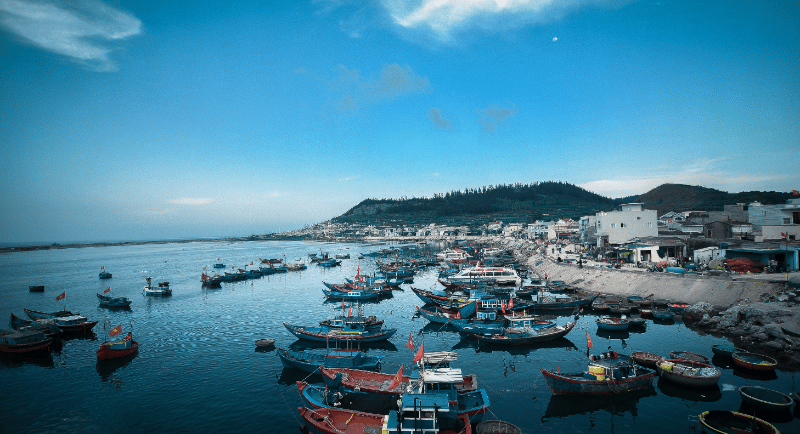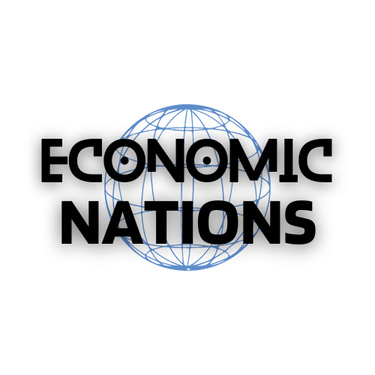Navigating Diplomacy: Harnessing Age-Old Sea Routes for New-Age Diplomatic Opportunities
On October 14, 2023, Indian Prime Minister Narendra Modi and Sri Lankan President Ranil Wickremesinghe reconnected an age-old sea route between India and Sri Lanka. Ferry service has been started after a gap of 40 years between the two nations. This exemplifies diplomatic opportunities created by age-old sea routes. This policy paper is presenting world-over view on it.
Diplomatic Hall
10/17/20237 min read


Abstract:
Sea routes have played a pivotal role in human history, enabling the exchange of goods, ideas, and cultures across vast distances. In the modern era, these age-old sea routes are presenting new diplomatic opportunities for nations worldwide. This policy paper explores the potential of sea routes to foster diplomatic cooperation and outlines the strategies and policies that nations can adopt to leverage these opportunities. By doing so, we can promote peace, stability, and economic prosperity on a global scale.
I. Introduction
A. Historical Significance of Sea Routes
B. The Resurgence of Sea Routes in the 21st Century
C. Objectives of the Policy Paper
II. The Geopolitical Significance of Sea Routes
A. The Maritime Silk Road
B. The Arctic Route
C. The Indian Ocean Trade Routes
D. The South China Sea
E. The Suez Canal
F. The Panama Canal
III. Economic Opportunities Along Sea Routes
A. Trade and Commerce
B. Energy Transport
C. Resource Exploration and Fisheries
D. Tourism and Transport
IV. Promoting Peace and Diplomacy
A. Diplomacy through Maritime Security
B. Collaborative Resource Management
C. Conflict Resolution Mechanisms
D. Environmental Protection
V. Bilateral and Multilateral Partnerships
A. Bilateral Agreements
B. Regional Cooperation
C. Multilateral Organizations
D. Soft Power and Cultural Diplomacy
VI. Infrastructure Development and Connectivity
A. Port Modernization
B. Connectivity Projects
C. Technological Advancements
D. Human Capital Development
VII. Challenges and Mitigations
A. Territorial Disputes
B. Environmental Concerns
C. Security Risks
D. Economic Imbalances
VIII. Case Studies
A. The European Union's Blue Growth Strategy
B. The Belt and Road Initiative
C. The Arctic Council
D. ASEAN and the South China Sea
IX. Policy Recommendations
A. Prioritizing Diplomacy
B. Investment in Maritime Security
C. Strengthening International Law
D. Encouraging People-to-People Exchange
E. Promoting Sustainable Practices
F. Crisis Management Protocols
X. Conclusion
A. Embracing the Diplomatic Potential of Age-Old Sea Routes
B. Working Towards a Secure and Prosperous Global Future
C. The Responsibility of Nations in Navigating Diplomacy
I. Introduction
A. Historical Significance of Sea Routes:
Throughout history, sea routes have been the lifelines of trade, diplomacy, and cultural exchange. Ancient civilizations, such as the Phoenicians, Greeks, and Romans, relied on maritime connections to facilitate commerce and diplomacy with distant lands. In the modern era, these sea routes remain as integral channels for international trade, playing a significant role in shaping diplomatic relationships among nations.
B. The Resurgence of Sea Routes in the 21st Century:
In the 21st century, we witness a resurgence of interest in sea routes, driven by globalization, technological advancements, and evolving geopolitical dynamics. New opportunities for diplomatic engagement and cooperation have emerged as nations seek to harness the potential of these maritime corridors for economic, strategic, and environmental objectives.
C. Objectives of the Policy Paper:
This policy paper aims to explore how age-old sea routes present new-age diplomatic opportunities among nations globally. By analyzing the geopolitical significance of key sea routes, the economic benefits they offer, and the potential for fostering peace and cooperation, this paper will provide policy recommendations to guide nations in leveraging these opportunities effectively.
II. The Geopolitical Significance of Sea Routes
A. The Maritime Silk Road:
The revival of the Maritime Silk Road, as part of China's Belt and Road Initiative, exemplifies the strategic importance of sea routes. This initiative connects China to Europe through the Indian Ocean and the Suez Canal, providing a platform for diplomatic engagement and infrastructure development along its path.
B. The Arctic Route:
Melting ice in the Arctic has opened up new shipping routes, transforming the region into a center of global interest. The potential for shorter and more efficient trade routes via the Arctic Ocean offers opportunities for diplomatic cooperation among Arctic and non-Arctic states.
C. The Indian Ocean Trade Routes:
The Indian Ocean remains a vital sea route, connecting the Middle East, Africa, and South Asia to global markets. Its significance for trade and energy transport creates opportunities for diplomatic collaboration and conflict resolution.
D. The South China Sea:
The South China Sea is a hotspot of geopolitical tensions. However, this sea route also offers the potential for diplomatic engagement among claimant states and external stakeholders to promote peace and stability in the region.
E. The Suez Canal:
The Suez Canal's position as a global trade artery, connecting the Mediterranean Sea to the Red Sea and beyond, highlights its strategic importance. Diplomatic cooperation in securing this vital route is essential for global trade.
F. The Panama Canal:
The Panama Canal continues to be a key element in global trade, linking the Pacific and Atlantic Oceans. Collaboration among nations to ensure its smooth operation is essential for diplomatic relations.
III. Economic Opportunities Along Sea Routes
A. Trade and Commerce:
Sea routes facilitate the movement of goods on a global scale, stimulating economic growth. Nations that invest in the development and maintenance of these routes can enhance their economic prosperity and diplomatic relations.
B. Energy Transport:
Sea routes are critical for the transportation of energy resources, including oil and liquefied natural gas. Ensuring the security and efficiency of energy transport routes is vital for diplomatic engagement and energy security.
C. Resource Exploration and Fisheries:
Marine resources are essential for economic development, and sea routes facilitate access to these resources. Diplomatic collaboration in resource management can lead to sustainable economic benefits.
D. Tourism and Transport:
Sea routes are instrumental in promoting tourism and international connectivity. Nations can leverage these routes to foster cultural exchange and people-to-people diplomacy.
IV. Promoting Peace and Diplomacy
A. Diplomacy through Maritime Security:
Cooperation on maritime security issues, such as piracy, smuggling, and maritime terrorism, fosters trust and cooperation among nations. Joint efforts to ensure the safety of sea routes contribute to peace and stability.
B. Collaborative Resource Management:
Resource-rich sea routes require collaborative efforts to prevent conflicts and overexploitation. Diplomacy plays a crucial role in negotiating resource-sharing agreements and sustainable practices.
C. Conflict Resolution Mechanisms:
Territorial disputes and conflicting maritime claims often challenge diplomatic relations. Nations should engage in dialogue and seek peaceful resolutions to conflicts, adhering to international law and dispute settlement mechanisms.
D. Environmental Protection:
Sea routes traverse fragile ecosystems, making environmental protection a diplomatic imperative. Nations must cooperate to address issues such as marine pollution and climate change, in line with international agreements and commitments.
V. Bilateral and Multilateral Partnerships
A. Bilateral Agreements:
Nations with shared sea routes can engage in bilateral agreements to enhance trade, infrastructure development, and security. Bilateral partnerships can provide valuable foundations for multilateral cooperation.
B. Regional Cooperation:
Regional organizations and forums, such as the Association of Southeast Asian Nations (ASEAN) and the Arctic Council, offer platforms for nations to address shared challenges and opportunities along sea routes.
C. Multilateral Organizations:
Global organizations like the United Nations and the International Maritime Organization (IMO) play significant roles in regulating and coordinating diplomatic efforts related to sea routes. Member states can work together within these organizations to promote peace, cooperation, and sustainable practices.
D. Soft Power and Cultural Diplomacy:
Promoting cultural exchange, education, and tourism along sea routes can foster goodwill and build positive diplomatic relations. Governments can employ soft power strategies to strengthen their diplomatic outreach.
VI. Infrastructure Development and Connectivity
A. Port Modernization:
Investing in modern, efficient ports is crucial for enhancing the capacity and competitiveness of sea routes. Nations should prioritize infrastructure development to accommodate larger vessels and increased trade volume.
B. Connectivity Projects:
Infrastructure projects such as rail and road networks connecting to sea routes can enhance economic integration and diplomatic cooperation between regions and countries.
C. Technological Advancements:
Leveraging technological innovations, such as satellite navigation and digital logistics, can improve the efficiency, safety, and security of sea routes. Nations should embrace cutting-edge solutions to enhance their diplomatic and economic capabilities.
D. Human Capital Development:
Investing in human capital and education in maritime-related fields can ensure a skilled workforce to manage sea route activities, fostering both economic growth and diplomacy.
VII. Challenges and Mitigations
A. Territorial Disputes:
Territorial disputes over maritime boundaries and sovereignty can disrupt diplomatic relations. Nations must employ peaceful negotiation and adhere to international law to address these issues.
B. Environmental Concerns:
Maritime routes face threats from pollution, overfishing, and climate change. Diplomatic efforts should be directed at addressing environmental issues through international agreements and cooperation.
C. Security Risks:
Maritime security challenges, including piracy and terrorism, can hinder diplomatic cooperation. Nations must collaborate to combat these threats and protect sea routes.
D. Economic Imbalances:
Sea routes can exacerbate economic inequalities between nations. Diplomatic initiatives should prioritize equitable trade and development opportunities to reduce disparities.
VIII. Case Studies
A. The European Union's Blue Growth Strategy:
The European Union's Blue Growth Strategy aims to promote sustainable growth in the maritime sector, fostering economic and diplomatic cooperation among EU member states. This case study highlights the importance of a comprehensive approach to sea route diplomacy.
B. The Belt and Road Initiative:
China's Belt and Road Initiative emphasizes the diplomatic potential of sea routes, connecting Asia, Europe, and Africa. It showcases how a nation can use sea routes to strengthen its global diplomatic presence.
C. The Arctic Council:
The Arctic Council is a multilateral forum involving Arctic and non-Arctic states, demonstrating the power of diplomacy in addressing shared challenges along the Arctic sea route. This case study underscores the significance of regional cooperation.
D. ASEAN and the South China Sea:
ASEAN's role in managing disputes in the South China Sea underscores the importance of regional diplomacy in addressing complex sea route challenges. This case study exemplifies the potential for peaceful conflict resolution.
IX. Policy Recommendations
A. Prioritizing Diplomacy:
Nations must recognize the diplomatic potential of sea routes and prioritize engagement and cooperation with other states to capitalize on shared opportunities.
B. Investment in Maritime Security:
Diplomatic efforts should focus on maritime security, combating threats to sea routes through cooperation, information sharing, and joint patrols.
C. Strengthening International Law:
Nations should commit to upholding international law, such as the United Nations Convention on the Law of the Sea (UNCLOS), and resolving disputes peacefully through negotiation and established mechanisms.
D. Encouraging People-to-People Exchange:
Promoting cultural exchange, tourism, and education along sea routes can build goodwill and enhance diplomatic relations.
E. Promoting Sustainable Practices:
Diplomacy should aim to address environmental challenges and promote sustainable practices along sea routes, safeguarding the future of these vital pathways.
F. Crisis Management Protocols:
Nations should establish crisis management protocols to address emergencies or conflicts that may arise along sea routes, ensuring rapid and peaceful resolutions.
X. Conclusion
A. Embracing the Diplomatic Potential of Age-Old Sea Routes:
Age-old sea routes continue to offer opportunities for nations to engage in diplomacy, build strong diplomatic relationships, and collaborate on shared interests.
B. Working Towards a Secure and Prosperous Global Future:
By recognizing and capitalizing on the diplomatic potential of sea routes, nations can contribute to global peace, stability, and prosperity, fostering an interconnected and secure world.
C. The Responsibility of Nations in Navigating Diplomacy:
Nations have a shared responsibility to navigate diplomacy effectively along sea routes, utilizing these maritime pathways as bridges to a more harmonious and prosperous world.
This policy paper highlights the diplomatic opportunities that age-old sea routes present in the contemporary world. By recognizing the geopolitical significance of these routes, embracing economic opportunities, and promoting diplomacy, nations can work together to navigate the complex challenges and opportunities that sea routes offer. In doing so, they can foster a more peaceful, stable, and prosperous global future.
Contacts
enquiry@economicnations.org
(xx) 98-11-937-xxx (On verification)
